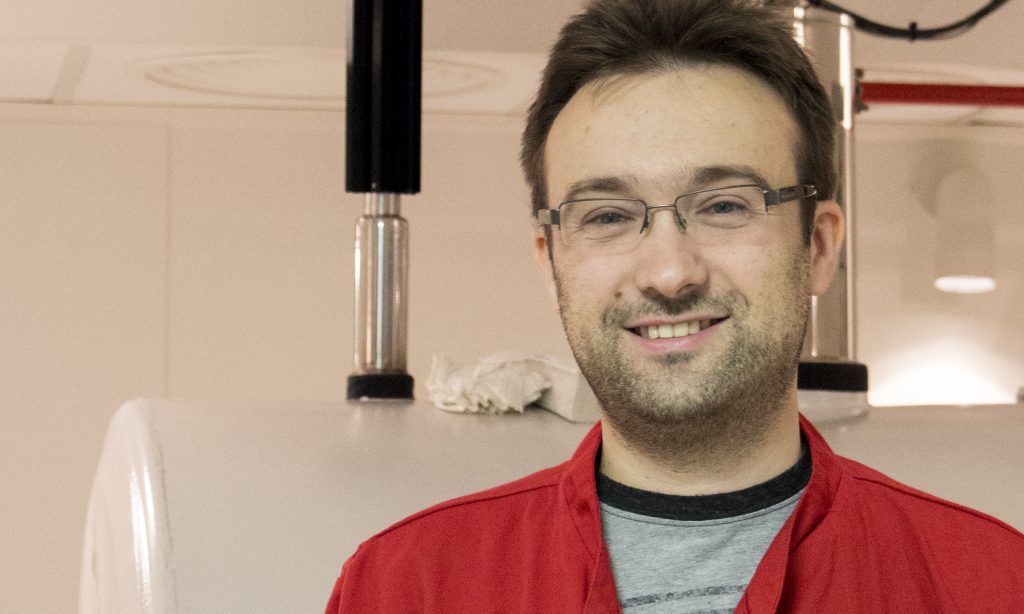Does STAT3 help form a barrier around GBM?
Fast facts
- Title: Defining the role of STAT3 in astrocyte adaptation to hypoxia as therapeutic target in glioblastoma
- Lead Researchers: Dr Sebastien Serres
- Where: University of Nottingham
- When: October 2018- June 2021
- Cost: £119,734
- Research type: Adult, Glioblastoma, High Grade, Academic
- Grant rounds: Expanding theories
What is the purpose of this study?
This research will allow the study of how tumour cells interact with the surrounding healthy brain. Dr Serres and his team have recently discovered that astrocytes, brain cells that form a physical bridge between neurons and blood vessels, may play a key role in the tumour’s interaction with the healthy brain.
The fast growth of a glioblastoma (GBM) means that the tumour doesn’t have time to grow new blood vessels to resupply oxygen, and parts of the tumour become hypoxic (lacking in oxygen).
This lack of oxygen causes the astrocytes to produce more transcription factors like STAT3. (Transcription factors turn specific genes on and off – they’re like genetic light switches.) The researchers think this increased amount of STAT3 turns on genes that make the astrocytes form a barrier around the tumour.
The first part of the research will grow tumour cells with astrocytes in different levels of oxygen and see the changes in STAT3.
Next, the researchers will analyse what other changes occur in the astrocytes when they have more STAT3 than normal.
Lastly, drugs that block STAT3 will be used to try and stop the astrocytes forming the barrier so that other drugs can get to the tumour.
Why is it important?
Glioblastomas are the most common type of brain cancer found in adults. They are highly aggressive tumours for which effective treatment options are lacking, highlighting the urgent need for new therapeutic strategies.
Brain tumours are heavily influenced by their surroundings. So it’s important to understand how the tumour interacts with the healthy brain and how it responds to conditions such as hypoxia.
This research project will help us better understand how the interaction between healthy brain tissue and tumour cells influences tumour survival and growth. It aims to identify ways in which we can disrupt these interactions with drugs to slow tumour growth and kill the tumour.
Who will it help?
According to the researchers, at least three-quarters (75%) of GBMs have hypoxic areas. This research aims to find a new way to treat these tumours by stopping the astrocyte barrier forming and allowing treatments to reach the tumour.
It is somehow unfair that survival rates have not improved at the same speed for brain cancers compared to other cancers. To close this gap and develop a new approach that could benefit brain tumour patients is what motivates me to carry out my research.
Dr Sebastian Serres, University of Nottingham
Findings
- A lack of oxygen in a brain tumour changed the behaviour of tumour cells and healthy astrocytes. The STAT3 signalling pathway is key to this response and transforms healthy astrocytes into reactive astrocytes.
- A lack of oxygen and reactive astrocytes were found in the same region of a patient’s tumour.
- Fat and sugar metabolism in reactive astrocytes and tumour cells are modified in similar ways in response to a lack of oxygen. The team state this suggests a role for the STAT3 signalling pathway in metabolic control and that STAT3 inhibitors could be used to prevent these changes.
Research is just one other way your regular gift can make a difference
Research is the only way we will discover kinder, more effective treatments and, ultimately, stamp out brain tumours – for good! However, brain tumours are complex and research in to them takes a great deal of time and money.
Across the UK, over 100,000 families are facing the overwhelming diagnosis of a brain tumour and it is only through the generosity of people like you can we continue to help them.
But, by setting up a regular gift – as little as £2 per month – you can ensure that families no longer face this destructive disease.
In this section

I have always been interested in understanding how brain cells cooperated to regulate energy metabolism. As my career progressed, I started to work on brain tumours and find a way to detect them at early stage.
Dr Sebastien Serres